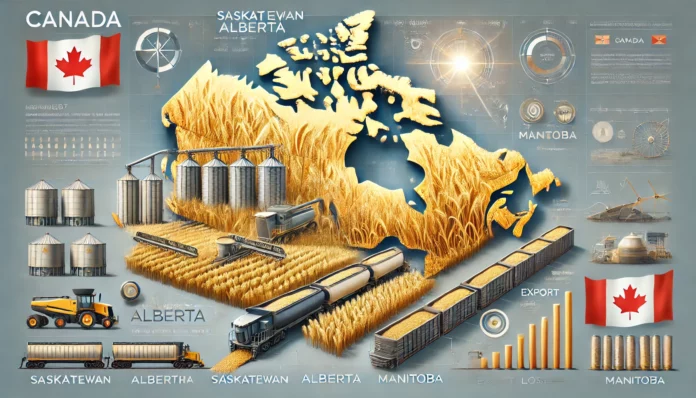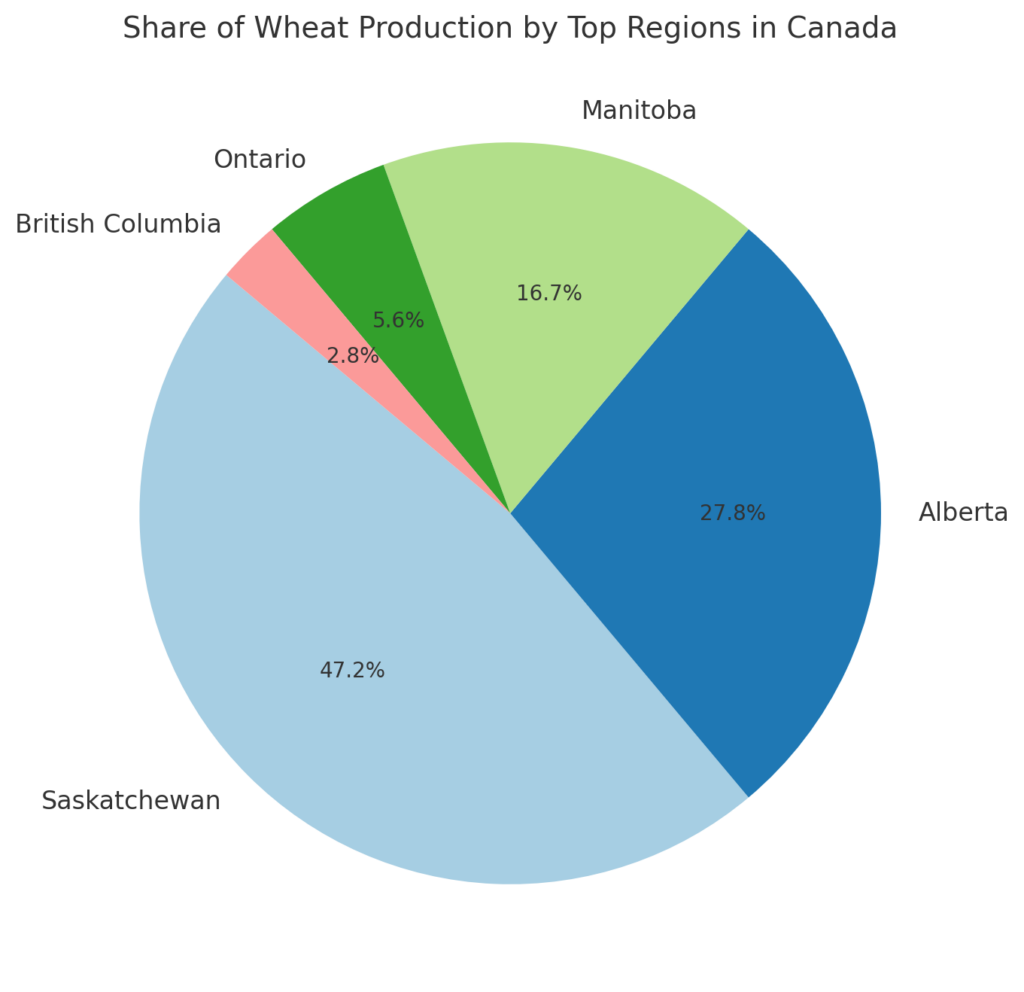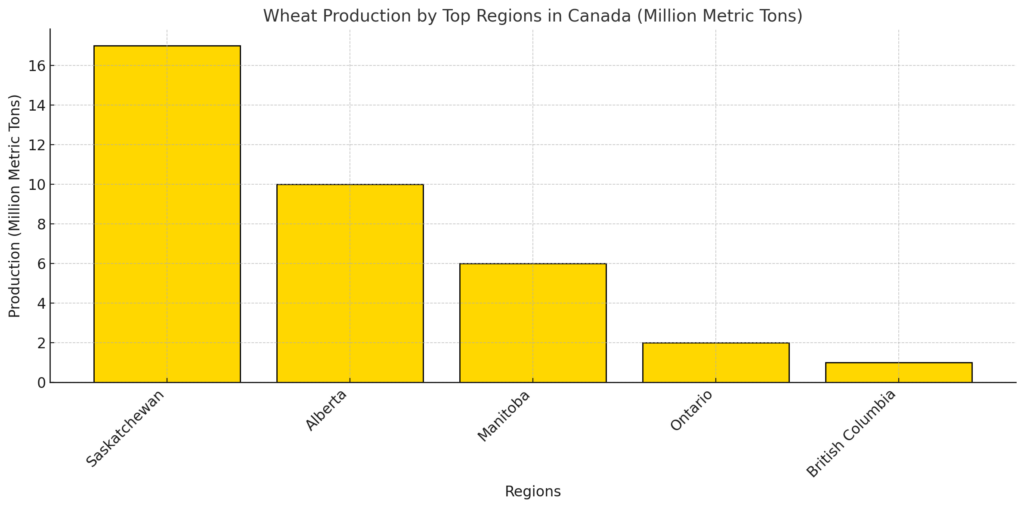
Canada is one of the world’s largest wheat producers and exporters, renowned for its high-quality grains. The country’s wheat production is concentrated in its western provinces, where fertile soils and advanced farming techniques create an agricultural powerhouse. This article highlights Canada’s top wheat-producing regions, their contributions to the economy, and the innovations driving their success.

1. Saskatchewan: The Wheat King of Canada
Saskatchewan leads Canada in wheat production, accounting for nearly half of the country’s total output.
- Annual Production: Approximately 17 million metric tons.
- Key Characteristics: Fertile black soils and vast plains ideal for wheat farming.
- Major Crops: Spring wheat and durum wheat for bread and pasta.
- Innovations: Adoption of no-till farming and advanced seed technologies.
- Significance: Supplies high-protein wheat for export markets, including Asia and Europe.
2. Alberta: A Major Wheat Contributor
Alberta is a top wheat-producing province, benefiting from its diverse climate zones and advanced infrastructure.
- Annual Production: Around 10 million metric tons.
- Key Characteristics: Rich soil quality and irrigation systems.
- Major Crops: Hard red spring wheat and durum wheat.
- Innovations: Precision farming and efficient water management practices.
- Significance: A key supplier for Canada’s domestic milling industry and global exports.
3. Manitoba: A Core Grain Producer
Manitoba is a significant wheat-producing region, with extensive farmlands and advanced agricultural techniques.
- Annual Production: Approximately 6 million metric tons.
- Key Characteristics: Fertile soils and a favorable climate.
- Major Crops: Spring wheat and winter wheat.
- Innovations: Integration of sustainable farming methods and pest-resistant wheat varieties.
- Significance: Plays a vital role in Canada’s food security and export capabilities.
4. British Columbia: A Niche Player in Wheat Production
Although not a major wheat producer, British Columbia contributes to Canada’s wheat industry through specialty farming.
- Annual Production: Less than 1 million metric tons.
- Key Characteristics: Small-scale farms in the Peace River region.
- Major Crops: Soft wheat for artisanal and specialty products.
- Innovations: Focus on organic farming and high-value niche markets.
- Significance: Supplies premium wheat for local markets.
5. Ontario: Eastern Canada’s Wheat Hub
Ontario’s wheat production is primarily focused on soft wheat varieties for milling and baking.
- Annual Production: Approximately 2 million metric tons.
- Key Characteristics: Fertile soils in the southwestern region.
- Major Crops: Soft red winter wheat for pastries and cakes.
- Innovations: Adoption of crop rotation and environmentally friendly practices.
- Significance: Supplies wheat for Canada’s food processing industry.

Innovations Driving Wheat Production in Canada
Canada’s wheat industry is at the forefront of agricultural innovation, ensuring sustainability and high yields:
- No-Till Farming: Reduces soil erosion and improves moisture retention.
- Drought-Resistant Varieties: Developed to withstand Canada’s diverse climate.
- Precision Agriculture: GPS technology and data analytics for efficient planting and harvesting.
- Sustainable Practices: Emphasis on crop rotation and minimal pesticide use.
Challenges Facing Canada’s Wheat Industry
Despite its strengths, Canada’s wheat industry faces several challenges:
- Climate Change: Unpredictable weather patterns affect yields.
- Global Competition: Rising wheat production in Russia and Ukraine.
- Infrastructure Gaps: Transportation and storage limitations in remote areas.
Conclusion
Canada’s top wheat-producing regions, led by Saskatchewan, Alberta, and Manitoba, are integral to the nation’s agricultural economy and global food supply. With a focus on innovation and sustainability, these regions ensure Canada remains a leading player in the international wheat market.



